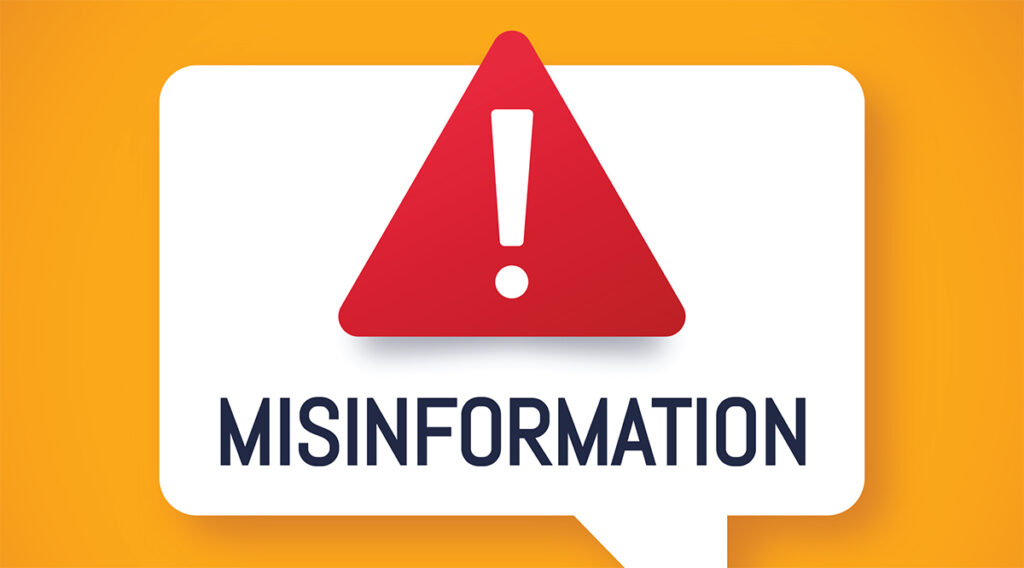
Misinformation is false information that is spread by people who think it’s true. This is different from ‘fake news’ and disinformation.
Fake news refers to websites that share mis or disinformation. This might be via satire sites like The Onion, but it also refers to those pretending to be trustworthy news sources.
Sometimes, people use the term ‘fake news’ to discredit true information. As such, it’s better to use more general terms such as ‘misinformation’ and ‘disinformation’.
Disinformation is false information that someone or a group spreads online while knowing it’s false. Generally, they do this for a specific intention, usually for the purpose of influencing others to believe their point of view.
3 quick things to know about misinformation
1. Fake news vs misinformation
‘Fake news’ refers to false information and news online. However, it’s more appropriate to use ‘misinformation’ and ‘disinformation’.
Misinformation is false information spread by people who think it’s true.
Disinformation is false information spread by people who know it’s false.
2.What forms can misinformation or ‘fake news’ take?
Misinformation comes in different forms
Mis/disinformation and fake news might look like:
- social media hoaxes
- AI adverts
- phishing emails
- popular videos
- sponsored posts
Misinformation is hard to spot for children who might not yet have the skills to fact-check. It can spread on social media, through satire news websites, via parody videos and other spaces.
3.How does misinformation impact children?
Mis/disinformation is an online harm
Misinformation can impact children’s:
- mental health
- physical wellbeing
- future finances
- views towards other people.
It can also lead to mistrust and confusion related to the information they come across online.
What is misinformation?
Misinformation is false information that is spread by people who think it’s true. This is different from ‘fake news’ and disinformation.
Fake news refers to websites that share mis or disinformation. This might be via satire sites like The Onion, but it also refers to those pretending to be trustworthy news sources.
Sometimes, people use the term ‘fake news’ to discredit true information. As such, it’s better to use more general terms such as ‘misinformation’ and ‘disinformation’.
Disinformation is false information that someone or a group spreads online while knowing it’s false. Generally, they do this for a specific intention, usually for the purpose of influencing others to believe their point of view.
How social media spreads false information
From sock puppet accounts to scam ads, social media can help spread misinformation to thousands if not millions of people at once. Unfortunately, social media algorithms make it so any interaction helps the content reach more people.
Angry reactions on Facebook or comments calling a post out as false only helps the poster reach more people. This is because the algorithm only understands whether something is popular or not. It can’t tell if information is false; that’s why users must report false information rather than engage with it.
Misinformation and disinformation pose a significant threat to societies worldwide, with particularly severe implications for countries like India. Spread of false information is critical risk perceived by experts across the globe. Addressing this challenge requires a multifaceted approach, including media literacy education, robust fact-checking mechanisms, and increased digital literacy among the population.







Rick here from Container Speedy House Co., Ltd, we are the factory producing modular container houses from China. It is a pleasure to introduce you our container houses for office, accommodation, hotel, school and camping house etc.
Please contact us by Whatsapp: +8615150130346 More information on our website: http://www.containerspeedyhouse.com More videos on our youtube: https://www.youtube.com/@containerspeedyhouse